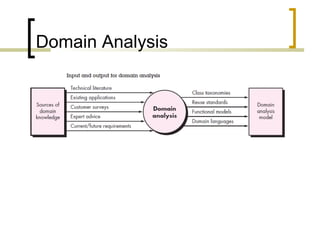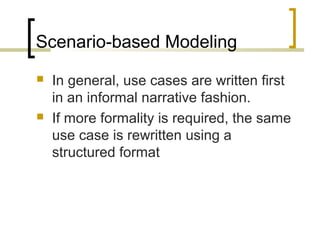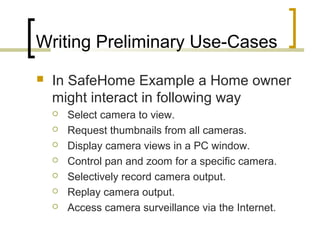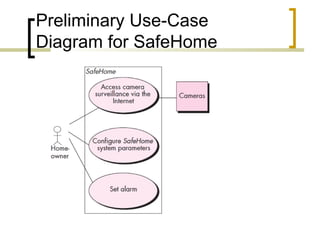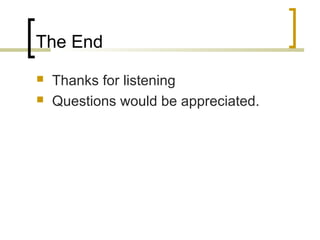This document discusses requirements modeling in software engineering. It covers creating various models during requirements analysis, including scenario-based models, data models, class-oriented models, flow-oriented models, and behavioral models. These models form the requirements model, which is the first technical representation of a system. The document provides examples of writing use cases and constructing a preliminary use case diagram for a home security system called SafeHome. It emphasizes that requirements modeling lays the foundation for software specification and design.
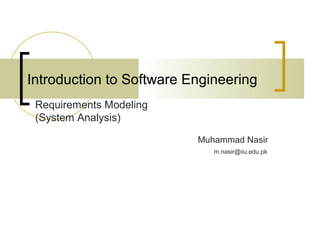
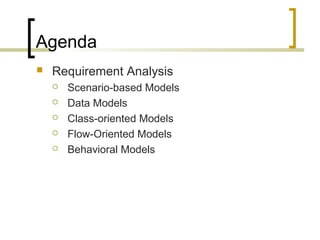
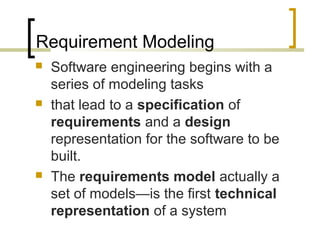
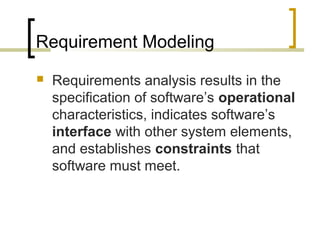
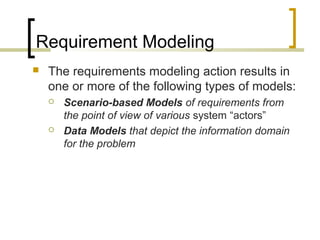
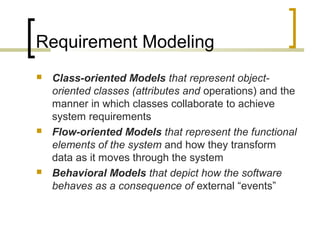
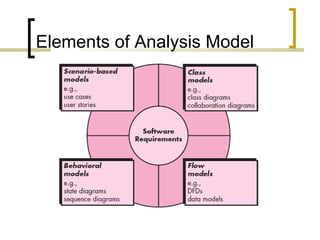
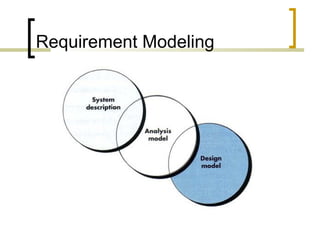
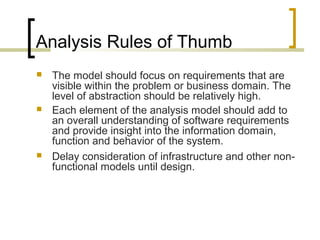
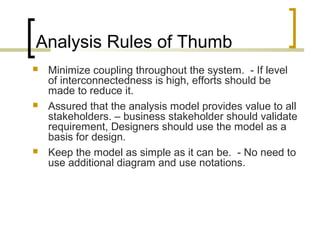
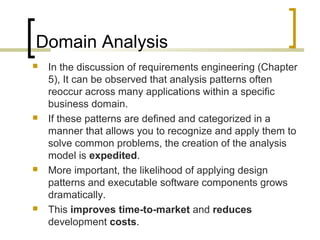
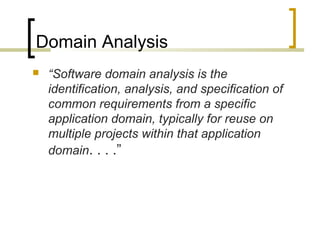
![Domain Analysis
[Object-oriented domain analysis is]
the identification, analysis, and
specification of common, reusable
capabilities within a specific
application domain, in terms of
common objects, classes,
subassemblies, and frameworks…](https://image.slidesharecdn.com/lecture12-requirementsmodeling-systemanalysis-141029064758-conversion-gate01/85/Lecture-12-requirements-modeling-system-analysis-13-320.jpg)
